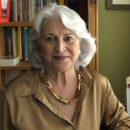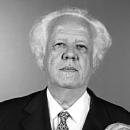[Op-Ed] LANGUAGES OF ANCESTRAL PEOPLES
In this article I invite you to approach the reality of ancestral languages, which persist despite
MÁS EN ESTA SECCIÓN
In this article I invite you to approach the reality of ancestral languages, which persist despite processes of deculturation imposed with direct or symbolic violence.
NATIVE LANGUAGES ARE RESISTANCE, IDENTITY, KNOWLEDGE AND CULTURE
The UN established February 21 as the date to commemorate the International Day of Native Languages, based, among others, on the fact that indigenous peoples represent just over 5% of the world's population, with 400 million people. The region with the highest proportion of indigenous population in the world is Asia and the Pacific (70.5%), followed by Africa (16.3%), Latin America and the Caribbean (11.5%), North America (1.6%) and Europe and Central Asia (0.1%). (ILO, 2019).
Indigenous peoples represent a large part of human diversity: more than 5,000 distinct groups inhabit some 90 countries where an overwhelming majority of the world's approximately 7,000 languages are spoken. 6,700 are indigenous languages, considered as the intangible heritage of humanity and peoples.
In Australia, for example, indigenous languages are numerous and are spoken on the mainland and on some nearby islands. Today, between 120 and 170 indigenous languages and dialects are spoken, with a rich history, culture and traditions that have endured over millennia in Australia, including "Kriol" and "Yolŋu matha".
The two ancestral languages with the largest number of speakers are Quechua and Guarani. Quechua in its different varieties with 14 million speakers; an indigenous language native to South America, made up of a set of varieties settled throughout southern Peru, Ecuador, western Bolivia, and some areas bordering Bolivia in Chile and Argentina, and even in some areas of Colombia. Currently, it is an official de jure language in Peru in the areas where it predominates or is used (in accordance with the current Constitution) and at the national level in Bolivia.
Guarani is the language of the Tupi-Guarani family spoken by 12 million people, of whom 6.5 million are speakers in the Southern Cone of America, including Paraguayan speakers who use it as their mother tongue or native language, and those who use it as a second language. It is one of the two official languages in Paraguay, according to the National Constitution of 1992, along with Spanish. It is also spoken in areas of northeastern Argentina due to Paraguayan immigration to that country. It is also spoken in parts of southern Bolivia and southwestern central Brazil, border areas with Paraguay. For its part, “Yopará”, a mixture of this language with Spanish, is very common today.
Other important languages by the number of speakers are:
- Nahuatl, a macrolanguage spoken in Mexico and Central America. There is a record of its existence since the fifth century. It is currently the native language of Mexico with the largest number of speakers. According to existing bibliography, it spread with the expansion of the Coyotlatelco culture during the fifth and sixth centuries in Mesoamerica, thus reaching the coast of the Pacific Ocean, where it gave rise to the Pochuteco, and also to Veracruz, giving rise to the Pipil of Central America. spoken by 1.7 million in Mexico.
- Aymara spoken by 1.5 million in Argentina, Bolivia and Peru.
- Quekchí is one of the languages used in Guatemala by the ethnic group of the same name, in the departments of Alta Verapaz, Baja Verapaz, Petén, Izabal, Zacapa and Quiché. It is the language with the largest territorial extension and the second in number of speakers in this Central American country. Quekchí is also the most widely spoken of all Mayan languages. It is a language of Mayan origin and one of the co-official languages of Guatemala. It is part of the Mayan language family and belongs more particularly to the Quichean branch. It currently occupies a geographically larger area than other Mayan languages in Guatemala, and is estimated to be spoken by about 1.4 million people.
Despite the evidence of our contributions to humanity, of the wisdom that we express from our languages, they have forced us with systematic violence to speak the language of the hegemonic powers, they tell us that they have to train us because we are savages
MATERIAL AND SPIRITUAL CONTRIBUTIONS TRANSMITTED THROUGH ANCESTRAL LANGUAGES
From ancestral languages we have been able to approach paradigms that twin culture and nature that show us vital possibilities: "sumaq kawsay" (in Quechua), "Wēt wēt fxi'zenxi" (in Nasa Yuwe), "Suma Qamaña" (in Aymara). In its original Quechua meaning, sumak refers to the ideal and beautiful realization of the planet, while kawsay means "life", a dignified life, in fullness, balance and harmony. There are similar notions in the ancestral languages of other indigenous peoples, such as the “Mapuche” (Chile and Argentina), the Guarani of Bolivia, northern Argentina and Paraguay who from their "teko kavi" invite us to the good life and "teko porã", summon us to live or good way of being, as well as the Achuar of the Ecuadorian Amazon, as well as the Achuar of the Ecuadorian Amazon. the Maya from Guatemala, in Chiapas, Mexico, and the Gunadules from Panama. (Source: Wikipedia).
IN COLOMBIA, INDIGENOUS PEOPLES CLAIM THE INTERNATIONAL DAY OF INDIGENOUS LANGUAGES
CONTENIDO RELACIONADO
Flyer prepared and disseminated by the Regional Indigenous Council of Cauca-CRIC
According to the National Indigenous Organization of Colombia (ONIC), 70 languages are spoken in Colombia: Spanish and 69 mother tongues. Among them, 65 are indigenous languages, 2 creole languages (Palenquero of San Basilio and that of the islands of San Andrés and Providencia – Creole), the Romani or Romani of the Rrom – Gypsy people and the Colombian sign language.
Photo 2: Creole speakers in San Andrés Islas Colombia. Source: Internet
The 65 indigenous languages in Colombia are: "Achagua", "Andoque", "Awapit", "Bará", "Barasano", "Barí Ara", "Bora", "Cabiyari", "Carapana", "Carijona", "Cocama", "Cofán", "Cuiba", "Curripaco", Damana, Desano, Embera, Ette Naka, Hitnu, Guayabero, Ika, Inga, Kakua, Kamsá, Kichwa, Kogui, Koreguaje, Kubeo, Kuna Tule, Macuna, Miraña, Muinane, Namtrik, Nasa-Yuwe, Nonuya, Nukak, Ocaina, Piapoco, Piaroa, Piratapuyo, Pisamira, Puinave, Sáliba, Sikuani, Siona, Siriano, Taiwano, Tanimuca, Tariano, Tatuyo, Tikuna, Tinigua, Tucano, Tucuná, Tuyuca, Uitoto, Uwa, Wanano, Wayuunaiki, Wounaan, Yagua, Yanuro, Yuhup, Yukpa, Yuruti.
The indigenous peoples of Colombia call on us every day and with greater emphasis on February 21 of every year, to take into account that native languages constitute fundamental elements of the systems of material and spiritual knowledge through which they relate to their territories and to planetary life. This is evident in their ways of naming the world and what is vital to their existence: "Katzazú" (in Awapit), "Binití" (in Puinave), "Uajipaiti vafakaava" (in Curripaco), "Iyano" (in Murui muina), "kwe'sx kiwe" (in Nasa Yuwe) are words that have the same meaning: “Territory”, the place on which they depend, which gives them life and allows them to subsist and of which the mother-land is part, "Kiwe" (in Nasa Yuwe).
Differentiating language and language is due to purely political and not at all linguistic reasons and includes other factors such as discrimination, racism, stigmatization and domination that is exercised from hegemonic languages






DEJE UN COMENTARIO: